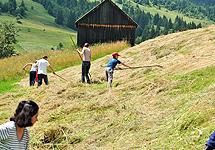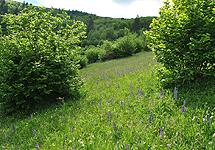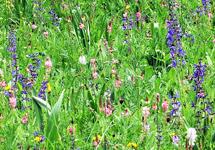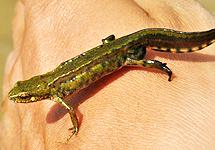HNV Farming & Biodiversity
Muntii Ciucului (Csik Mountains, Romania)

Natura site names: Muntii Ciucului (SCI) and Depresiunea si Muntii Ciucului (SPA)
Natura Code: ROSCI0323 & ROSPA0034
The name of the site is derived from a mountain basin of the Eastern Carpathians, called Csik Basin (in Hungarian). The basin got its name from the Weatherfish (Misgurnus fossilis) that was once very abundant in the floodplain marshes.
Characterisation: Mountain region in the Eastern Carpathians with an elevation between 700-1.500 m. Very important site for mountain hay meadows (6520). Further grassland habitats include semi-natural dry grasslands rich in orchids (6210*), alpine calcareous grasslands (6170), species-rich Nardus grasslands (6230*) and lowland hay meadows (6510), as well as different forest communities (9110, 91V0, 9410).
Text: L. Demeter & B. Hill
© Photos: L. Demeter














